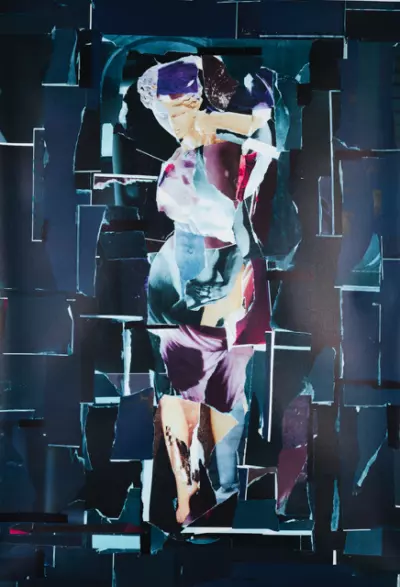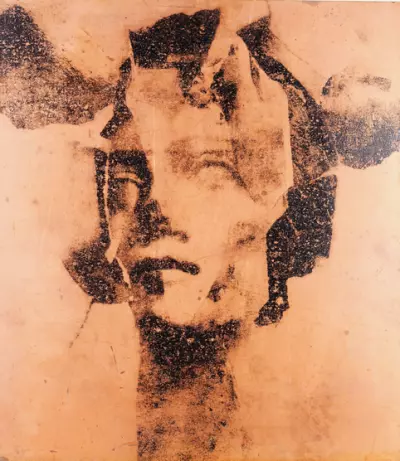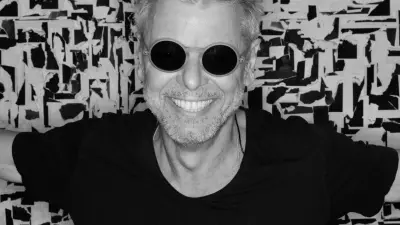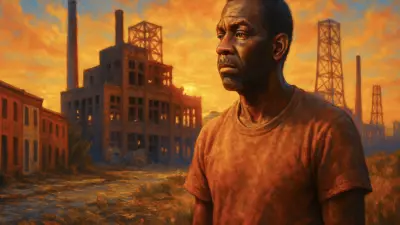In many ways, the art and sensibilities of ancient Greece and Rome were more enlightened than our own now that sexuality and gender identity are highly politicized.

[Editor’s Note: Dutch-born artist, international photographer, and film director Hans Neleman is sharing his latest work, Time Between Echoes, at Pittsburgh’s Zynka Gallery beginning April 26.]
My work explores the fluid relationship between past and present, where historical imagery is reclaimed, deconstructed, and reconfigured into contemporary narratives.
In Time Between Echoes, I present a new body of work that integrates collage, assemblage, and printmaking—layering fragments of history to evoke a dialogue between memory, myth, and taboo.
Through this interplay, the work challenges the notion of time as linear, instead revealing it as cyclical, fractured, and resonant—much like the echoes of antiquity that permeate the present.
Drawing from my background in photography, I expand my practice through intricate collages and mixed-media assemblages, where torn paper, paint, and ink create a continuum between time periods.
Reconfigured historical figures emerge through layered compositions, their presence reimagined—echoes of the past.
Sculptural depictions of the human form—particularly Roman portraiture—serve as a recurring motif in my work.
These classical representations, once intended to immortalize power and virtue, are reframed through the lens of a contemporary artist who engages with questions of identity, desire, and mortality.

A quiet, veiled work. The eclipse metaphor suggests celestial concealment and transformation. This intimate piece holds tension between visibility and erasure, strength and vulnerability – imagery layered like sediment—centaur fragments acting as mythological and metaphorical anchors.
This fascination extends to the mythological figure of the Centaur—a being caught between the realms of human and beast, civilization and chaos. Centaurs in mythology often embody primal urges, raw sexuality, and unrestrained violence, yet they also serve as liminal figures—representing both wisdom and savagery, transformation, and duality.
While traditionally depicted as masculine figures, their hybrid nature—caught between two states of being—invites reflection on themes of fluidity.
For me, the Centaur is an allegory for metamorphosis, mirroring the very nature of collage itself—where disparate elements fuse to create something both ancient and new, familiar yet unsettling.
The exhibition includes my new explorations into the concept of printing through monoprints, paper lithography, and painted monotypes.
These experimental prints further blur the boundaries between reproduction and originality, history and reinterpretation—allowing printed matter to become an extension of his collage-based language.
The “time between echoes” in my work is the space where historical fragments and contemporary questions collide.
My practice engages with inspirations from the past, where the echo of an ancient sculpture meets the pulse of modern thought. The explicit depictions of the body, once commonplace in Roman portraiture and mythology, now challenge contemporary sensibilities.

The body emerges introspectively from dark geometry—vulnerable, yet defiant. The title speaks to what remains unspoken but deeply felt. There’s quiet strength in this poised silence.
Details once revered—unapologetic nudity, fluid representations of gender, and the raw physicality of the human form—are now often met with discomfort, censorship, or political scrutiny.
By amplifying these echoes through reproduction, I question modern-day constructs of morality and taboo. Truth, however, is often subjective—shaped by culture, power structures, and time.
In ancient civilizations such as Rome and Greece, gender and sexuality existed on a broader spectrum; representations of intersex figures, androgynous deities, and fluid expressions of identity were not anomalies but part of a greater understanding of the body and its place in society.

This work on copper seems to distill identity—burn it down to its essential traces. The oxidized copper mirrors a kind of bodily alchemy, and speaks to trans embodiment as a process of transformation, resistance, and material presence. They hold the scars of process the way skin holds memory.
Yet today, these same conversations are often met with resistance. The treatment of transgender and non-binary individuals in contemporary politics highlights an ongoing struggle over identity and visibility—one that starkly contrasts with the openness found in historical representations.
My work does not simply reference history—it is a creative dialogue. By placing these fragmented echoes of the past into a modern framework, I pose questions about cultural bias. What was once revered is now radical, and what was once accepted is now contested.
Through Time Between Echoes, I create a space where the past and present converge—where history is not just remembered but reactivated and where the body, in all its complexity, reclaims its rightful place beyond the constraints of time.







